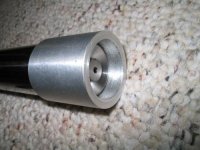C
coyote06
Guest
looking for advice on best approach to fitting a new barrel on a glued in action obviously screwing on the action to headspace will be an issue on the lathe.
the action is a wichita 1375 the existing barrel has a cone breech I was tempted to machine a false action stub of some sort.
what would be the process of fitting on a new barrel any advice will be greatly appreciated.
the action is a wichita 1375 the existing barrel has a cone breech I was tempted to machine a false action stub of some sort.
what would be the process of fitting on a new barrel any advice will be greatly appreciated.
Last edited by a moderator:




